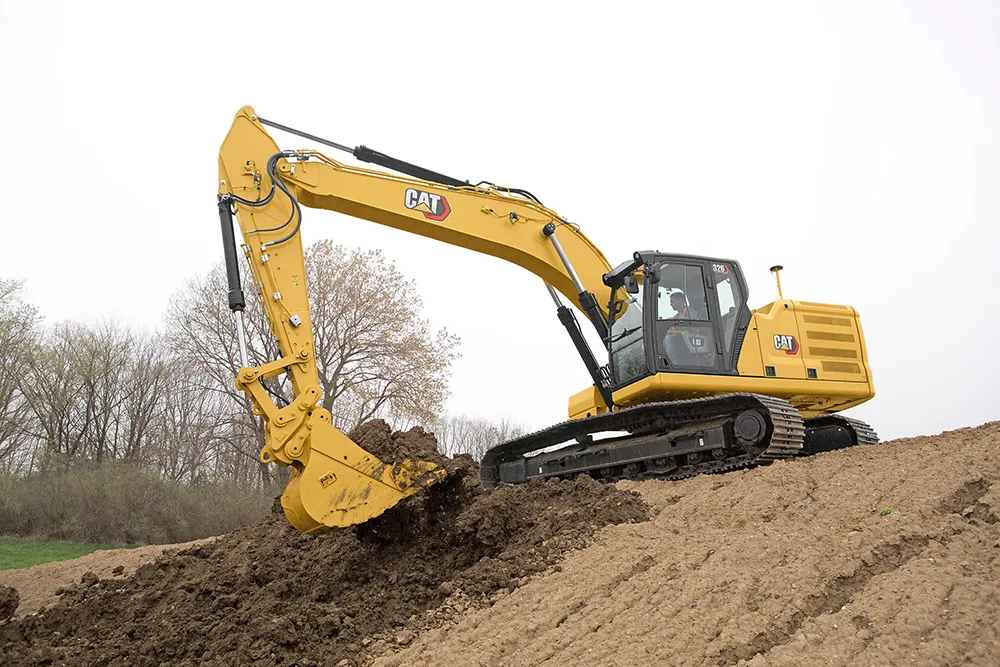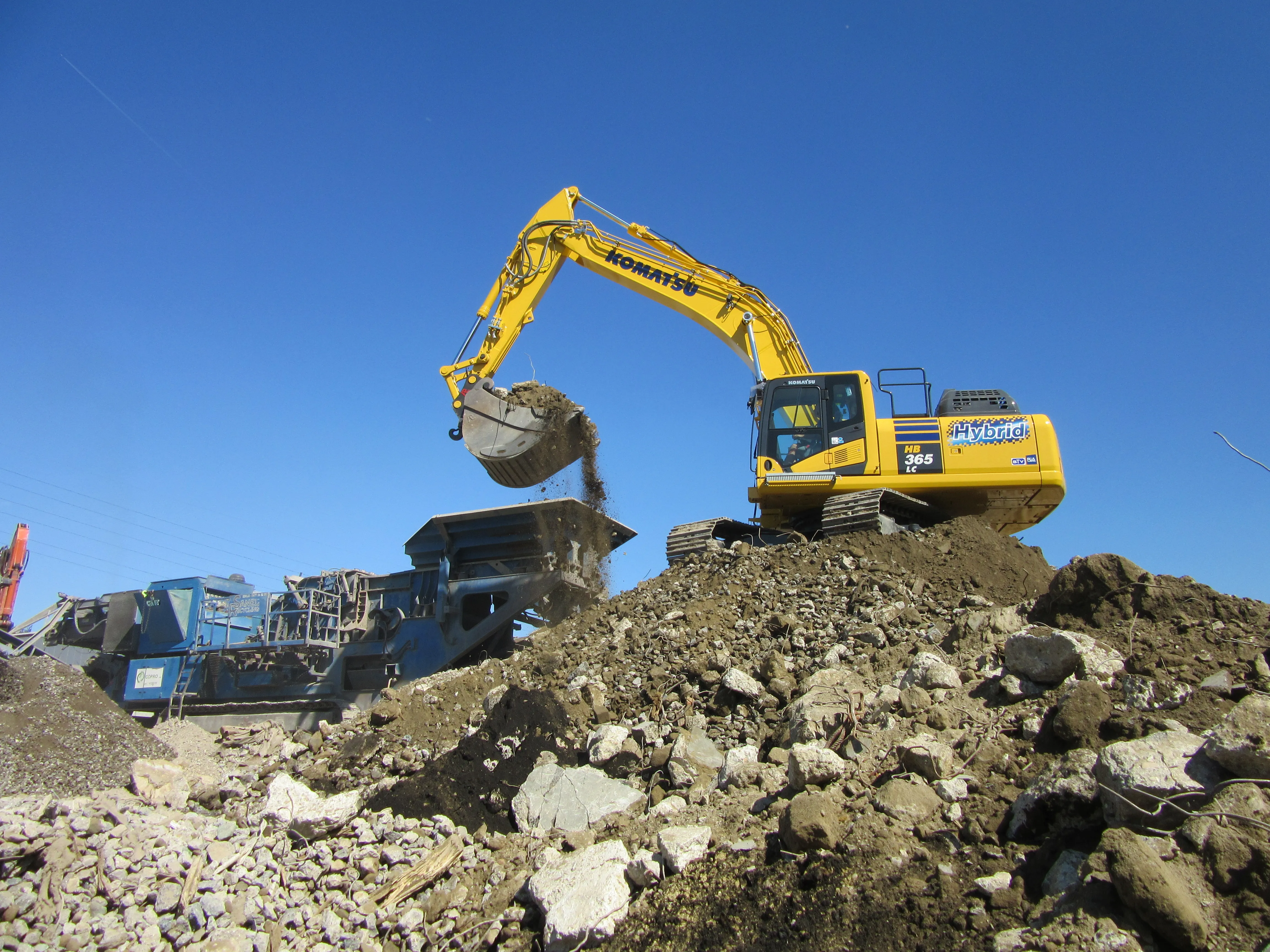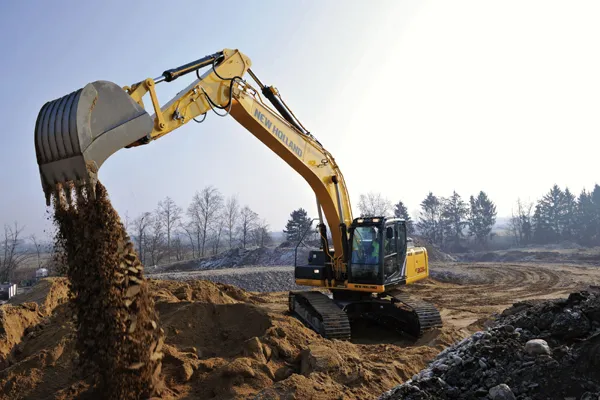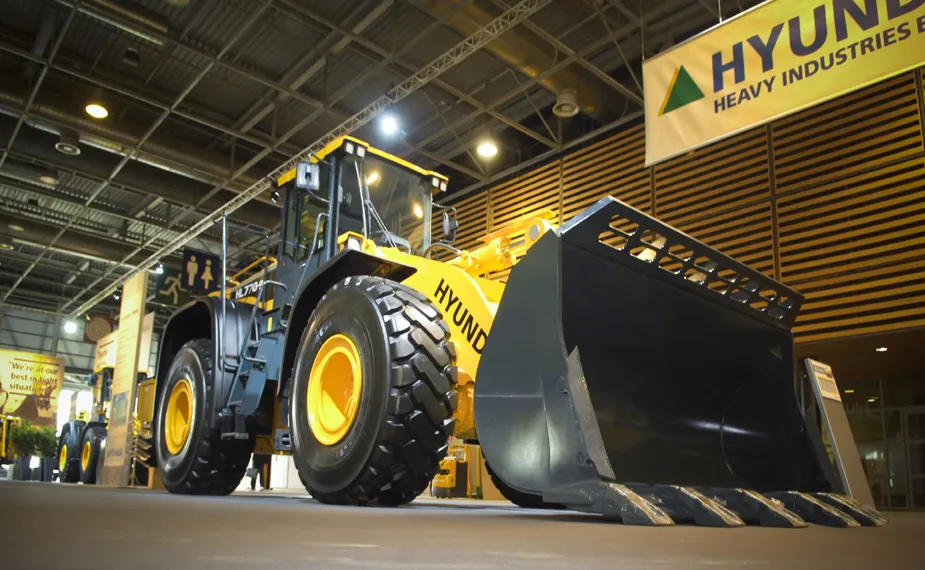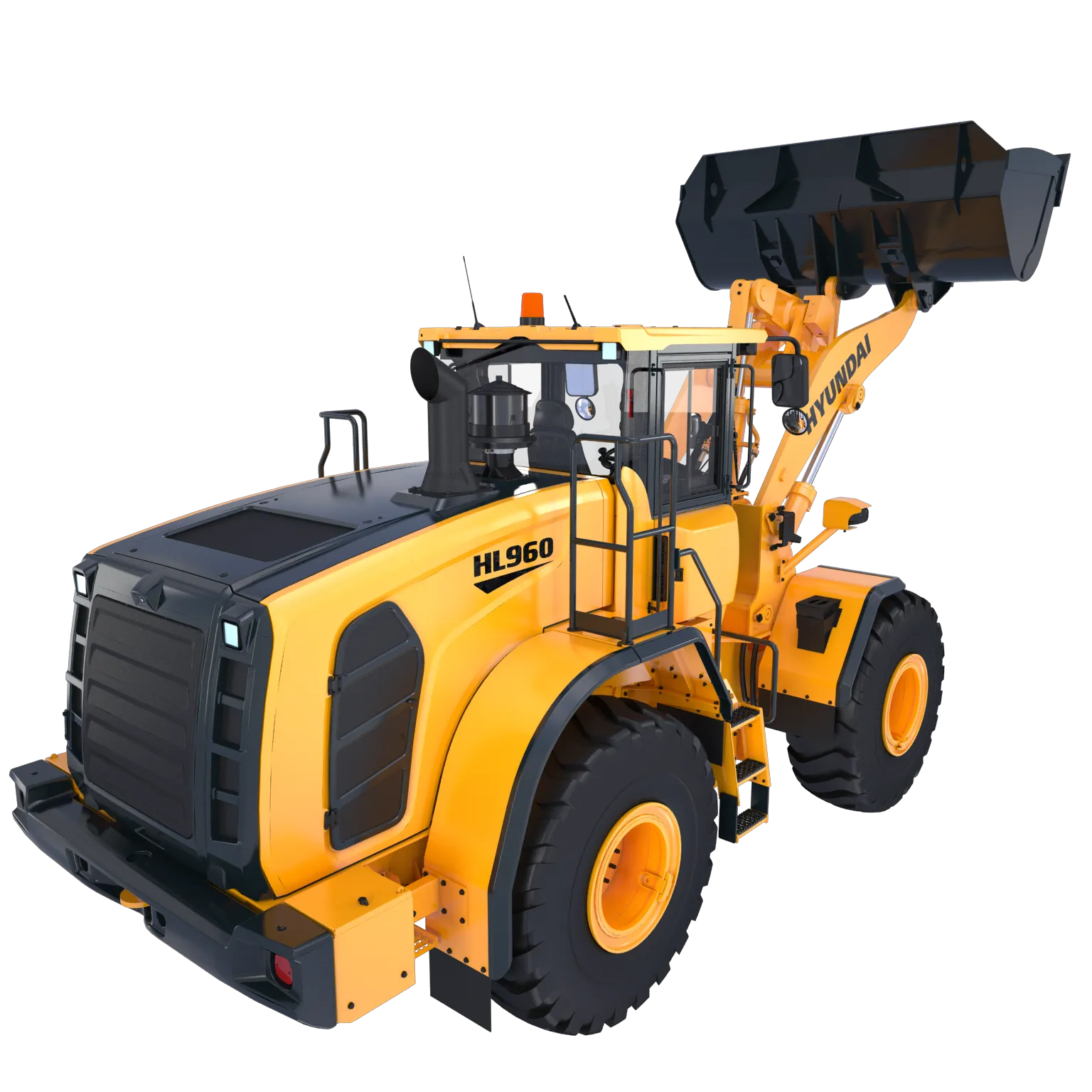
With the new engines the machines are compliant with the latest regulations (Tier4 final and EU Stage IV final) for exhaust Nox reduction and particle matters. Hyundai has opted for a combined solution of EGR and SCR technologies. At the same time a reduction in fuel consumption of 10% has been achieved – this is dependent on the type of job the wheeled loader is performing and its activity. Hyundai has selected several engine suppliers for the new machines but the HL955 and the HL 960 are equipped with new Cummins engines.
With the new engine technology the side vent holes have increased in size for a better airflow towards the engine. The new sized vents have slightly changed the graphical design resulting in better brand recognition. Also the head lamps have been re-designed for less vibration and longer durability, the standard bucket has been optimised for 5% more efficiency and less spill during driving and the engine is now easy accessible with the electrical, fully opening engine hood. The cabins are fully ROPS/FOPS certified.
The wheeled loader cabin has been completely redesigned for better noise reduction, less vibration and more space for the operator. The ergonomically improved operator seat with seat mounted adjustable control levers are said to be designed with the operators comfort in mind. All switches and buttons are now neatly centralised and easy accessible including the auxiliary spool control button that is integrated in the joystick. The air circulation has been dramatically improved for more comfort and last but not least the instrument panel and monitor screen are now state-of-the art.
Commenting on the improvements of the new wheeled loaders, marketing manager of HHIE, Milan Wamsteker said: “Hyundai has succeeded in raising the quality of the wheel loaders dramatically; functionally, ergonomically and performance wise.We guarantee that a visit to Hyundai at Intermat will be time well spent. Hyundai quality has never been better!”


